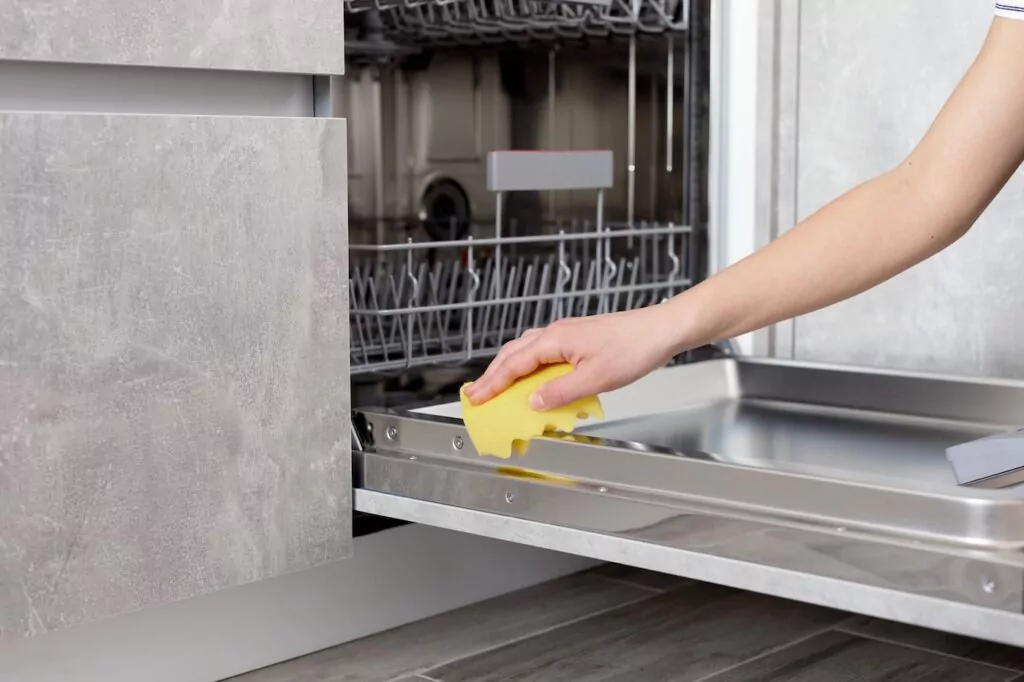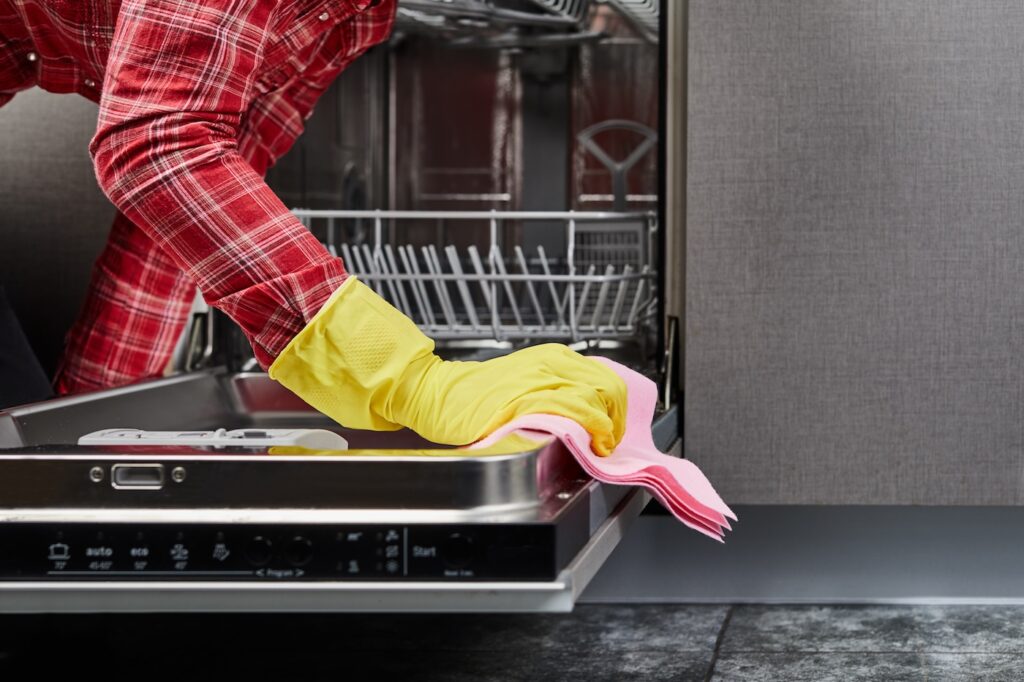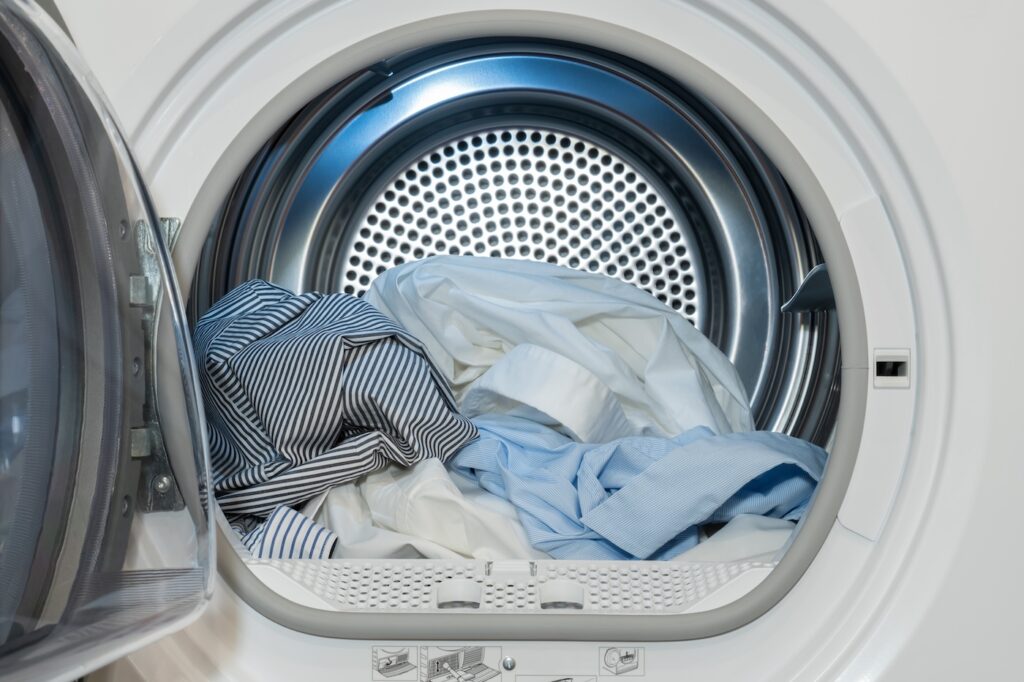Your dishwasher works hard every day, tackling dirty dishes, grease, and food residue. But when was the last time you showed this hardworking appliance some love? Regular cleaning isn’t just about hygiene—it can improve dishwasher performance, extend your dishwasher’s lifespan, and enhance energy efficiency—all to make sure your dishes come out sparkling every time.
Why Cleaning Your Dishwasher Matters
Even though the dishwasher is meant to clean, it needs a helping hand every now and then too.
Common Dishwasher Issues Due to Poor Maintenance
Not taking care of a dishwasher can result in problems down the line, starting with unpleasant odors that go beyond the kitchen to create a musty atmosphere throughout the home. Additionally, poor cleaning results can create cloudy glasses and spotted dishes. Eventually clogged components result in buildup around seals, water jets, and more.
Benefits of a Clean Dishwasher
Fortunately, regularly cleaning can help save you time and money. Well-maintained dishwashers simply work better, consuming less energy while improving cleaning performance. Additionally, preventing build up through regular maintenance prevents costly repairs and hygienic cleans.
How Often Should You Clean Your Dishwasher?
Cleaning your dishwasher starts with daily maintenance including removing any visible food debris after each cycle to prevent immediate buildup. On a weekly basis, aim to clean the dishwasher filter and wipe down door seals to prevent grime accumulation and to prevent leaks. Monthly, run a clean cycle that deep cleans internal dishwasher components. Lastly, run a maintenance check and deep clean your dishwasher at least every quarter.
Tools and Materials Needed
Essential Cleaning Supplies
- Distilled white vinegar
- Baking soda
- Microfiber cloths
- Soft-bristled toothbrush
- Dish soap
DIY vs. Store-Bought Cleaners
Choosing what type of cleaner to use depends on your preferences. DIY cleaners are typically more environmentally friendly, cost effective, and are items you likely already have at home. Store-bought cleaners, however, have special formulas designed to tackle dishwasher issues, making them a convenient cleaning option.
Step-by-Step Dishwasher Cleaning Guide
Read on to discover the steps to clean a dishwasher.
Cleaning the Dishwasher Filter

1. Remove bottom rack
2. Locate and unlock the dishwasher filter
3. Rinse filter under hot water
4. Gently scrub with soft brush
5. Clean filter base
6. Reinstall filter securely
Cleaning Dishwasher Racks

Next, clean the dishwasher racks. Remove both racks from the dishwasher and wash them with warm, soapy water. Use a soft cloth or sponge to remove stuck-on residue. If the racks have any signs of rust or damage, it’s time to replace them. Once clean, dry the racks with a towel to prevent any water spots or rust formation. Finally, place them back in the dishwasher.
Cleaning the Spray Arms

Now remove your dishwasher’s spray arms. Refer to your manufacturer guidelines to determine if and how this is possible. Using a toothpick or thin wire, clear each hole removing mineral deposits, food, or other debris. Rinse the spray arms under running water, and rotate them for a complete clean. Double check there are no blockages left and replace the spray arms.
Wiping Down Door and Seals

Use a damp cloth and mild dish soap to wipe the dishwasher door, paying special attention to the edges and corners. Then take a soft brush or sponge dipped in warm, soapy water to scrub away any buildup on the rubber gasket around the dishwasher door. If you notice any stubborn areas, a mixture of vinegar and water can help.
Deep Cleaning with Vinegar and Baking Soda

Place one cup of white vinegar in a dishwasher-safe container on the top rack. Then run a hot water cycle without detergent. You can skip the dry cycle to avoid baking in any remaining grime.
After the vinegar cycle, sprinkle one cup of baking soda on the bottom of the dishwasher. Run a short, hot water cycle then provide one final scrub. Leave the door open to air dry to prevent any potential mold growth.
Preventative Maintenance Tips
Daily Habits for a Cleaner Dishwasher
There are certain habits you can develop to keep your dishwasher operating in top condition. Always scrape dishes before loading and avoid overloading for effective cleans. Also remove any large food particles that could clog filters or spray arms. After each cycle, leave the door slightly open to allow moisture to escape and prevent any mildew from accumulating.
Monthly Maintenance Checks
Monthly maintenance can help resolve any issues before they become too costly. Inspect all hoses for signs of wear and tear. Also check seals and gaskets for damage or mineral buildup. Lastly, clean the filter to improve dishwasher efficiency and prevent bad odors.
Common Mistakes to Avoid
Make sure you use only the amount of detergent that’s necessary, as too little or too much can leave residue or reduce effectiveness. Additionally, never ignore filter maintenance as clogged filters can severely affect your dishwasher. Also address hard water buildup to prevent long-term damage. Also avoid using bleach, as bleach can damage stainless steel.
When to Call a Professional
While regular maintenance can prevent many issues, some problems require professional help.
These include persistent odors, which can indicate a deeper problem. Consistent drainage problems can also indicate a mechanical concern, as well as unusual grinding or loud noises while operating. Finally, visual damage including cracks, rust, or broken parts should always be checked by a professional to prevent further deterioration.
Conclusion
Regular dishwasher maintenance goes a long way to keeping your dishwasher functioning for years to come. If you need a helping hand, look no further than Taskrabbit. Taskers can help clean and maintain your dishwasher. Find the help you need today and enjoy the benefits of a well-maintained home!














